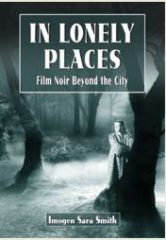There seem to be specific instances that make a particular type of movie clearly identifiable as belonging to a certain group. For example, we like to have deserts, gunfights and horses if we watch a western movie, and we may look out for earrings, battleships, sabers and the Jolly Roger when we watch a pirates picture.
 It may not surprising then to have certain expectations when watching a film noir; however, must there be men with trench coats, beautiful blondes with guns, dark streets, mostly ordinary people on the edge of crossing the line towards the illegal, punishable, and most of all: do we expect all this to take place in the mean, poorly lit streets of the city, the metropolis?
It may not surprising then to have certain expectations when watching a film noir; however, must there be men with trench coats, beautiful blondes with guns, dark streets, mostly ordinary people on the edge of crossing the line towards the illegal, punishable, and most of all: do we expect all this to take place in the mean, poorly lit streets of the city, the metropolis?
Imogen Sara Smith tries to determine just those expectations, then gives plenty of examples of different settings for the films noir. Simply, because they are there: the sinister actions of him/her all taking place in the mountains, the desert, the plains, the woods and the homes of suburbia.
Needless to say that the roughly 100 movies with a setting outside the concrete jungle then represent another aspect of the noir catalog: namely, the flight from the streets of the city to the lonely highways of the open country where something else awaits the protagonists.
And more often than not it is not mercy and freedom but just another degree of loneliness, danger, and longing for shelter the city seemed unable to provide for.
The characters encountered there are similarly alienated from society as are their fellow citizens in the metropolis; the contrast of the city vs. country seems to vanish altogether since both faith in a better future and the hope to meet gentle people free from corruption are just as easily disappointed there.
The author masterfully sheds light on the “dark passages” that lead away from the city into the woods, the wilderness and the unconscious of a changing American landscape of the community and of the mind.
Imogen Sara Smith. In Lonely Places. Film Noir Beyond the City. McFarland, 2011, 255 pages.
Review by Dr. A. Ebert (C) 2013
(This review was previously published on www.jive-talk.com – Musing on JAZZ and Related Topics).
